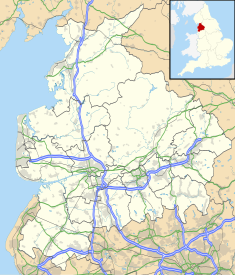| Hambleton Hall | |
|---|---|
 The building in 2009 | |
| Location | Hambleton, Lancashire, England |
| Coordinates | 53°52′19″N2°56′33″W / 53.87198°N 2.94261°W |
| Area | Borough of Wyre |
| Built | 1710 |
Listed Building – Grade II | |
| Designated | 17 April 1967 |
| Reference no. | 1361876 |
Hambleton Hall is a historic building in Hambleton, Lancashire, England. Built in 1710, it is a house in pebbledashed brick with a slate roof, in two storeys and three bays. There is a continuous rendered string course between the storeys. The windows are modern and have plain reveals. Above the doorway is an inscribed plaque. [1]





